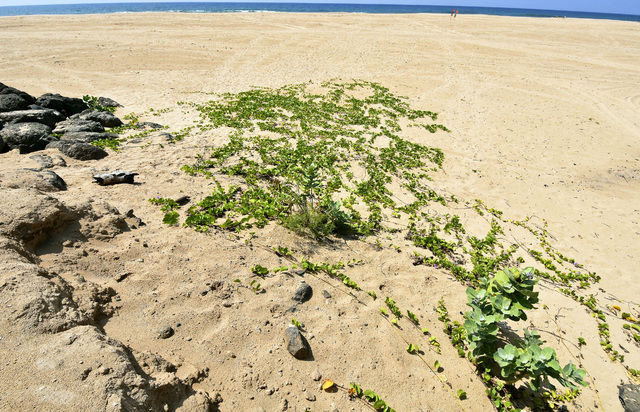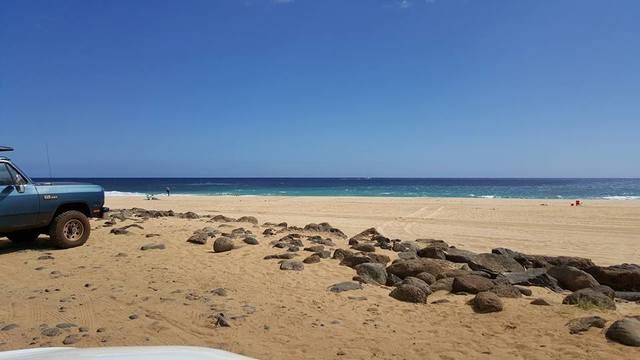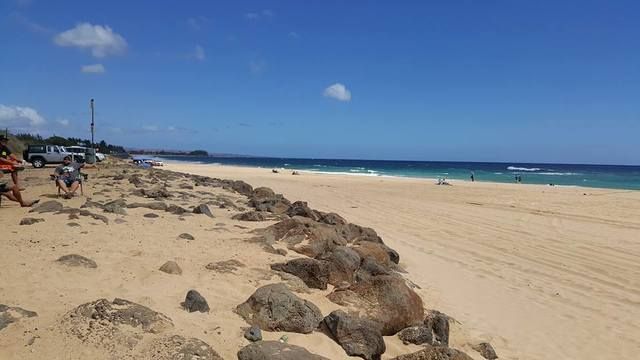KEKAHA — The sand at Kekaha Beach is coming back, thanks to a three-year streak of high north surf during the winter seasons. Hawaii State Rep. Daynette (Dee) Morikawa, who lives in Waimea, said she saw the sand accumulation over
KEKAHA — The sand at Kekaha Beach is coming back, thanks to a three-year streak of high north surf during the winter seasons.
Hawaii State Rep. Daynette (Dee) Morikawa, who lives in Waimea, said she saw the sand accumulation over a recent weekend on the west side. She went out to check the beach after seeing photos on Facebook of the new sand deposits at Kekaha Beach.
“It is so wonderful to see residents and tourists be able to enjoy the beautiful sand beach that we remember from years ago,” Morikawa said.
Chip Fletcher, coastal geologist with the University of Hawaii, said the ebb and flow of sand around Kauai is typical and seasonal because of the high waves coming from the south in the summer and the north in the winter.
“Some areas will see sand gain and at the end of the season, when the waves change, the shoreline typically goes back to former configuration,” Fletcher said.
Chuck Blay, a Kauai geoscientist who has been studying sand movement on the island for the past three years, said typically the annual sand shift on the eastern-facing shores of Kauai are impacted by trade winds and their effects on wave heights.
The west side, however, has more than just tradewinds influencing the sand swap.
Blay, who has been studying the Kekaha and Waimea beaches, said much of the sand’s activity on that side of the island can also be attributed to the Pacific Decadal Oscillation, which is a recurring pattern of warming and cooling of the ocean in the North Pacific.
He said it can be compared to an El Nino, except that term only applies to the ocean-atmosphere climate variations in the Southern Pacific.
Blay explained the North Pacific’s waters have two phases — warm and cool — where the ocean’s temperature distribution changes. These phases can last decades each.
Warm temperature in the center of the ocean, versus the coastal areas, means more energy and bigger swells. Cooler temperatures mean less storms and smaller swells coming from the north.
That’s important because the sand at Kekaha beach has to travel through alongshore currents from the reefs near Haena, around Na Pali, through Polihale and finally all the way down to the end of Kekaha Beach.
“When we have big swells like we’ve had the last two or three years, more North Shore swells, it generates a current strong enough to move the sand to Kekaha,” Blay said.
Blay also mentioned that this isn’t the first time Kekaha has been through the cycle of sand.
“Back in the mid-70s there was no sand on that beach and then it all came back and then recently, in 2012 and 2013 it happened again,” Blay said. “Now it’s coming back again.”
The sand replenishment is a slow process. Blay said instead of happening over night, it usually takes between three and five years for the sand to change on the beach.
“It’s happens year, after year, after year and the beach at Kekaha is slowly coming back,” Blay said. “I expect the beach will change its width by a significant amount.”
•••
Jessica Else, enviromental reporter, can be reached at 245-0452 or jelse@thegardenisland.com.




